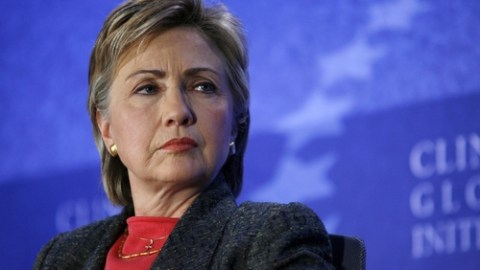eDiplomacy: Hillary Clinton’s legacy beyond 140 characters

As speculations over the future of Hillary Clinton mount, her tenure at the U.S. Department of State is – seemingly – drawing to a conclusion, leaving behind a very distinguishable legacy: a new way to look at diplomacy through innovation and the eyes of the people.
Secretary Clinton has changed not only how the United States actuates its foreign policy priorities but also how diplomacy is conducted on the international arena. Her 21st Century Statecraft platform has leveraged the power of ideas while embracing technology and new tools for a better way to engage with the public and all diplomatic actors, traditional and less-traditional.
“Political and technological changes are allowing huge numbers of people around the world to influence events as never before,” she wrote in the New Statesman in July 2012. “New players, from those emerging economic powers to non-state actors such as corporations and cartels, are reshaping the international landscape.”
What Clinton has once referred to as “quantum leaps in connection technologies” have significantly impacted her way to conduct foreign policy in an ever more interconnected, interdependent world. Her challenge has been to keep up with the speed with which news now spreads while still being able to discern and control messages. It’s not secret that Secretary Clinton first learned of the uprisings in the Tunisian city of Sidi Bouzid in 2010 – what became the initial sparkle that lead to what is now known as Arab Spring in Tunisia, Egypt, Libya, Yemen, Syria – from Twitter.
While social media are not to be confused as the cause of the disruptive changes in the Arab world, they have certainly contributed to feed dissent movements and speed up the news cycle in those regions. Clinton saw new infinite possibilities in how technology and innovation were changing the power landscape in the Arab world. She embraced social media from the very beginning focusing on what Princeton University’s Anne Marie Slaughter, a former Director of Policy Planning at the U.S. Department of State, has described as a “pivot to the people.”
“She has introduced policies, programs, and institutional reforms designed to support government-to-society and society-to-society diplomacy, alongside traditional government-to-government relations,” Slaughter said. “These initiatives do not get headlines, but they will gradually transform much of American foreign policy.”
Clinton’s State Department essentially adapted to the new geopolitical shift of power from hierarchies to individuals and network of citizens that followed the uprisings in the Arab world.
“What we are seeking to do essentially is keep pace with the rate of innovation and attempt to adapt to a world in which citizens are increasingly connected and increasingly powerful,” said Alec Ross, the Secretary’s Senior Advisor for Innovation, in a 2011 interview.
Not without criticism, hostility, and step backs, Secretary Clinton was able to integrate traditional diplomacy with new technologies and social media: from public diplomacy to consular affairs, from Ambassadors’ Twitter profiles to Facebook accounts, from foreign policy to internal communication. All State Department’s operations have been influenced by the shift to ediplomacy and 21st Century Statecraft expanding Clinton’s reach to millions of individuals at home and abroad.
To her very publicized travels – a total of 379 days on the road, 110 countries, and 907 thousand miles – Secretary Clinton had so far added 288 Facebook pages, 196 Twitter profiles, and 125 YouTube channels, according to a recent report by Fergus Hanson, non-resident fellow at the Brookings Institution. On social media only, she can count on almost 13 million Facebook fans, some 2 million Twitter followers, and 16 million video views with around 27 thousand subscribers.
Under Hillary Clinton, the State Department has become a powerhouse for innovation.
However, while the Secretary is certainly the one who took ediplomacy out of its long and arduous incubation period making it a new pillar for U.S. foreign policy, she is not the original initiator. In the wake of the September 11 attacks to the World Trade Center in New York, Colin Powell first recognized the potential of ediplomacy in 2002 and created a special task force to work on better communication, internally, at home and abroad. The following Secretary of State, Condoleezza Rice, reshaped it as transformational diplomacy bridging it to what it is today, a true incubator of ideas and innovative thinking.
Clinton approach has been nothing but contagious, pushing governments around the globe to embrace technology and social media tools to different degrees. The Foreign Office in London has built on the U.S. experience quite successfully and has recently opened its digital strategy to citizens around the world to contribute ideas. Other countries are catching up quite quickly, as the Economist reports: “Russia’s foreign ministry is said to have more than 40 Twitter accounts. Israel has announced it will make more use of e-diplomacy. Even China, which heavily censors social media at home, is interested in using them as a diplomatic tool abroad.”
What Clinton has initiated is a rush to social media and ediplomacy without precedents. Her success in the crafting of a strong digital agenda, even in the wake of the incidents in Benghazi and Cairo in September 2012.
Ediplomacy is certainly an area where innovation – rather then technology, per se – play the central role. We need to realize how the power of ideas can create visible results and transition traditional diplomacy to a new phase, where people are new players, and politicians and diplomats are not elites any longer. We need to realize ediplomacy has the potential to bring to a true lasting pivot, thus making diplomacy the most extraordinary tool our governments can have in fulfilling our foreign policy agendas and engaging with the world.
Image courtesy of Shutterstock.





